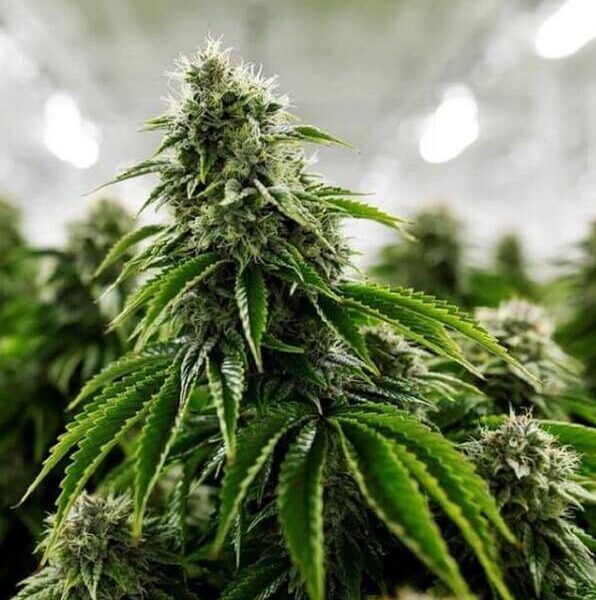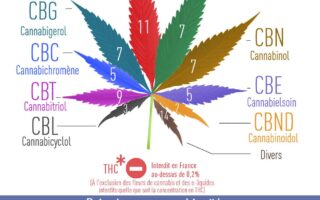Exploring the World of THC Plants: Nature’s Green Laboratory
In the verdant embrace of our planet, a diverse array of flora thrives, each with its unique story and purpose. Among this lush tapestry, THC plants stand out not only for their striking appearance but also for the myriad effects they have on the human experience. Known predominantly as cannabis, these remarkable plants have been cultivated and revered for centuries, serving as sources of medicine, recreation, and inspiration. In this article, we delve into the fascinating biology of THC plants, the science behind their psychoactive properties, and their transformation from ancient agricultural crops to modern powerhouses of wellness and creativity. Join us on a journey through the leaves, flowers, and history of these extraordinary botanical specimens, as we uncover the complexities and allure of THC plants.
Table of Contents
- Exploring THC Plants: Understanding Their Growth Stages and Requirements
- Nutritional Needs of THC Plants: Soil Composition and Fertilization Strategies
- Pest and Disease Management for Thriving THC Plants
- Maximizing Yield: Techniques for Harvesting and Curing THC Plants
- Q&A
- To Wrap It Up
Exploring THC Plants: Understanding Their Growth Stages and Requirements
Understanding the various stages of THC plant growth is vital for cultivating a healthy and productive crop. Typically, the lifecycle can be divided into four main stages: germination, seedling, vegetative, and flowering. During the germination stage, seeds absorb moisture and begin to sprout. In the seedling phase, young plants grow their first leaves, called cotyledons, and require ample light and water. The vegetative stage is when these plants flourish, focusing on leaf and stem development, while the final flowering stage involves the production of buds, where THC concentration peaks.
Each stage has distinct requirements for optimal growth, which include:
- Light: Essential for photosynthesis; different stages require varying light durations and intensities.
- Nutrients: A balanced supply of nitrogen, phosphorus, and potassium is crucial throughout the lifecycle.
- Temperature: Ideal temperatures can vary, but they generally favor a range of 70-85°F (20-30°C) during the day.
- Humidity: Changes throughout growth; seedlings generally thrive in higher humidity, while flowering plants prefer lower levels.
To better visualize the growth stages and their requirements, the following table summarizes key points:
| Growth Stage | Light Requirement | Nutrient Focus | Temperature (°F) |
|---|---|---|---|
| Germination | Low | Minimal | 70-75 |
| Seedling | Moderate | Higher Nitrogen | 70-80 |
| Vegetative | High | Balanced N-P-K | 75-85 |
| Flowering | High, with darkness period | Lower Nitrogen, Higher P-K | 70-80 |
Nutritional Needs of THC Plants: Soil Composition and Fertilization Strategies
The success of THC plants largely relies on their nutritional needs, which are significantly influenced by soil composition. A well-balanced soil typically includes essential nutrients, such as nitrogen, phosphorus, and potassium, as well as trace elements like magnesium, calcium, and sulfur. These components work synergistically to promote robust growth and potent cannabinoid production. To cultivate optimal soil conditions, consider incorporating the following:
- Organic matter: Enhances microbial activity and improves soil structure.
- pH levels: Aim for a pH range of 6.0 to 7.0 for best nutrient absorption.
- Trace minerals: Include minerals like boron and iron to avoid deficiencies.
Fertilization strategies are essential in meeting the specific growth stages of THC plants. During the vegetative phase, plants heavily require nitrogen to encourage leafy growth, while in the flowering stage, a boost in phosphorus and potassium is critical for flower development. Utilizing a blend of organic and inorganic fertilizers can be effective. Here’s a simple guide:
| Growth Stage | Recommended Nutrient Ratio |
|---|---|
| Vegetative | N-P-K: 4-2-3 |
| Flowering | N-P-K: 1-3-4 |
Proper monitoring and adaptation to the plants’ responses can significantly enhance yields and cannabinoid content, ensuring a successful and productive cultivation journey.
Pest and Disease Management for Thriving THC Plants
To cultivate healthy THC plants, effective pest and disease management is crucial. A proactive approach involves regularly inspecting your plants for signs of trouble and implementing preventative measures. Begin by ensuring a clean growing environment, as this can significantly reduce pest issues. Consider the following strategies to keep your plants safe:
- Regular Monitoring: Check leaves and stems frequently for any discoloration or damage.
- Companion Planting: Utilize plants like marigolds and basil to deter harmful insects naturally.
- Organic Pesticides: Opt for solutions such as neem oil or insecticidal soaps that target pests without harming your plants.
In addition to preventive measures, it’s essential to act quickly at the first sign of pests or disease. Identifying the type of pest or pathogen can streamline your response, allowing for targeted treatments. Keep the following table in mind for effective identification and management:
| Pest/Disease | Symptoms | Treatment |
|---|---|---|
| Spider Mites | Webbing on leaves, yellow spots | Increase humidity, apply neem oil |
| Powdery Mildew | White powdery spots on leaves | Improve air circulation, use sulfur sprays |
| Aphids | Stunted growth, curled leaves | Introduce ladybugs, spray with insecticidal soap |
By combining preventative tactics with timely interventions, you can ensure that your THC plants thrive and produce the quality yield you desire. Always stay informed about potential threats, and don’t hesitate to reach out to local growers or online forums for support when challenges arise.
Maximizing Yield: Techniques for Harvesting and Curing THC Plants
When it comes to harvesting THC plants, timing is crucial to maximize yield and potency. One essential technique involves monitoring the trichomes, which are the tiny, glandular projections on the buds. As they mature, these trichomes change from clear to cloudy and finally to amber; harvesting at the right moment can significantly impact the plant’s THC levels. Other methods worth considering include:
- Proper Pruning: Remove excess leaves and identify the main colas to ensure better light penetration.
- Controlled Environment: Maintain ideal humidity and temperature during the final weeks to enhance resin production.
- Gentle Handling: Minimize stress during the harvesting process to preserve the delicate structure of the buds.
Curing is another crucial stage that follows the harvest. The process allows the flavors to develop while effectively eliminating chlorophyll and other undesirable compounds. Begin by air-drying the trimmed buds in a dark, well-ventilated space for around 7-14 days, until the stems snap easily. Afterward, transfer the buds into glass jars for the curing phase and follow these guidelines:
- Burp the Jars: Open jars for a few minutes daily in the first few weeks to release moisture and control humidity.
- Check for Mold: Regularly inspect the buds for any signs of mold during the curing process.
- Duration Matters: Curing for at least 4-6 weeks will improve the overall quality of the final product.
Q&A
Q&A: Understanding THC Plants
Q1: What are THC plants?
A: THC plants refer to cannabis plants that produce tetrahydrocannabinol (THC), the psychoactive compound known for its effects on the mind and body. These plants belong to the Cannabis genus and are predominantly cultivated for medicinal and recreational purposes.
Q2: What is the significance of THC within these plants?
A: THC is significant because it interacts with the body’s endocannabinoid system, which regulates various functions such as mood, appetite, and pain sensation. The compound is responsible for the euphoric “high” typically associated with cannabis use, making it a key player in both therapeutic applications and recreational enjoyment.
Q3: Are all cannabis plants high in THC?
A: Not all cannabis plants are high in THC. There are three main strains: Cannabis sativa, Cannabis indica, and Cannabis ruderalis. While many sativa and indica varieties are bred for high THC content, there are also strains specifically bred to have low THC levels, such as hemp, which is defined as containing less than 0.3% THC.
Q4: How do growers determine the THC levels in their plants?
A: Growers determine THC levels primarily through laboratory testing, which analyzes the plant’s chemical composition. Techniques like High-Performance Liquid Chromatography (HPLC) are commonly used to identify the concentration of THC and other cannabinoids present in the plant material.
Q5: What are some common uses for THC plants?
A: THC plants are used for a variety of purposes, including medicinal applications such as pain relief, appetite stimulation, anxiety reduction, and nausea relief in patients undergoing chemotherapy. Recreationally, they are consumed for their psychoactive effects, often enjoyed through smoking, edibles, or oils.
Q6: Are there any side effects associated with THC consumption?
A: Yes, THC can cause a range of side effects, including temporary memory impairment, increased heart rate, anxiety, and altered judgment. The experience can vary greatly depending on individual tolerance levels, dosage, and the method of consumption.
Q7: How is the cultivation of THC plants regulated?
A: The cultivation of THC plants is heavily regulated and varies by country and region. Legal frameworks are in place governing everything from where and how cannabis can be grown to the licensing of growers. In areas where cannabis is legalized, growers must adhere to specific guidelines concerning the cultivation and sale of their products.
Q8: Can anyone grow THC plants?
A: The ability to grow THC plants typically depends on local laws. In regions where cannabis cultivation is permitted, individuals may be allowed to grow a limited number of plants, often for personal use. However, aspiring growers should always check local regulations before starting their cultivation journey.
Q9: How can one differentiate between THC and CBD plants?
A: THC plants are primarily cultivated for their psychoactive effects due to high THC content, while CBD plants are low in THC and higher in cannabidiol (CBD), a non-psychoactive compound. Labels and lab testing results provide clarity, with products often clearly indicating their THC and CBD concentrations.
Q10: What does the future hold for THC plants?
A: The future of THC plants looks promising, with evolving legal landscapes and growing acceptance of cannabis for both medicinal and recreational use. Continued research into the therapeutic benefits of THC and advancements in cultivation technology may pave the way for new applications and innovations within the industry.
To Wrap It Up
THC plants weave a complex tapestry that interlaces biology, culture, and innovation. As we continue to explore the depths of these remarkable plants, we unveil not only the science behind their cannabinoid-rich buds but also their historical significance and potential future applications. Whether for medicinal purposes, recreational enjoyment, or sustainable practices, THC plants invite us to broaden our understanding of nature’s offerings. As research evolves and perspectives shift, one thing remains clear: the story of THC plants is just beginning, promising to captivate and challenge us for generations to come. So, as you venture forth, may you carry with you a sense of curiosity and respect for the remarkable world of these botanical wonders.



